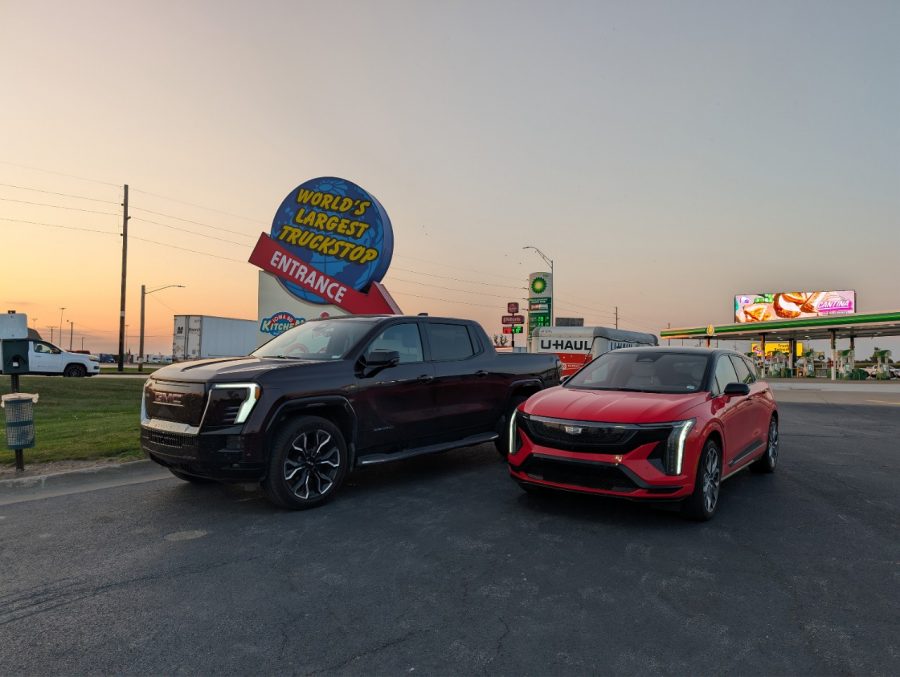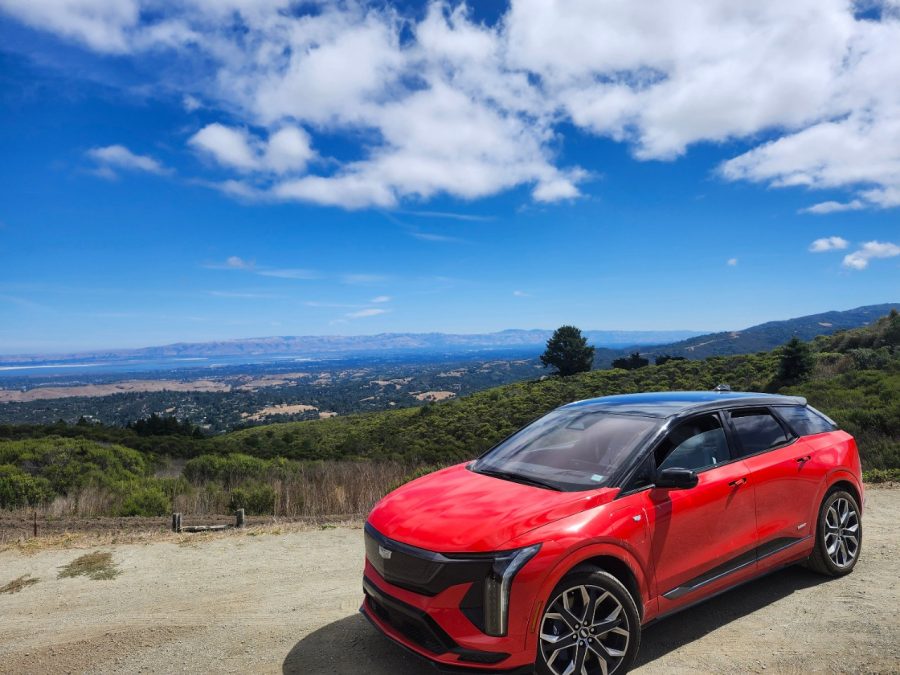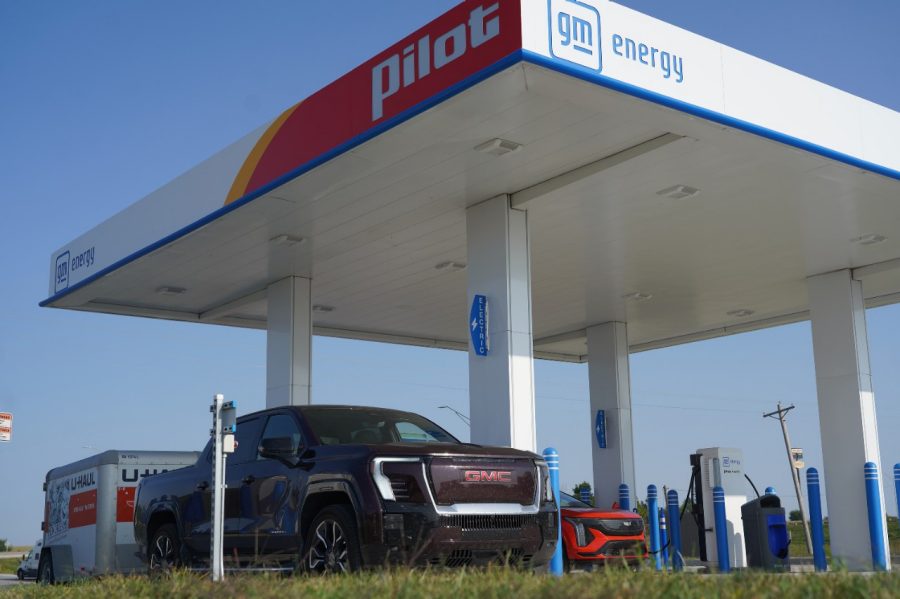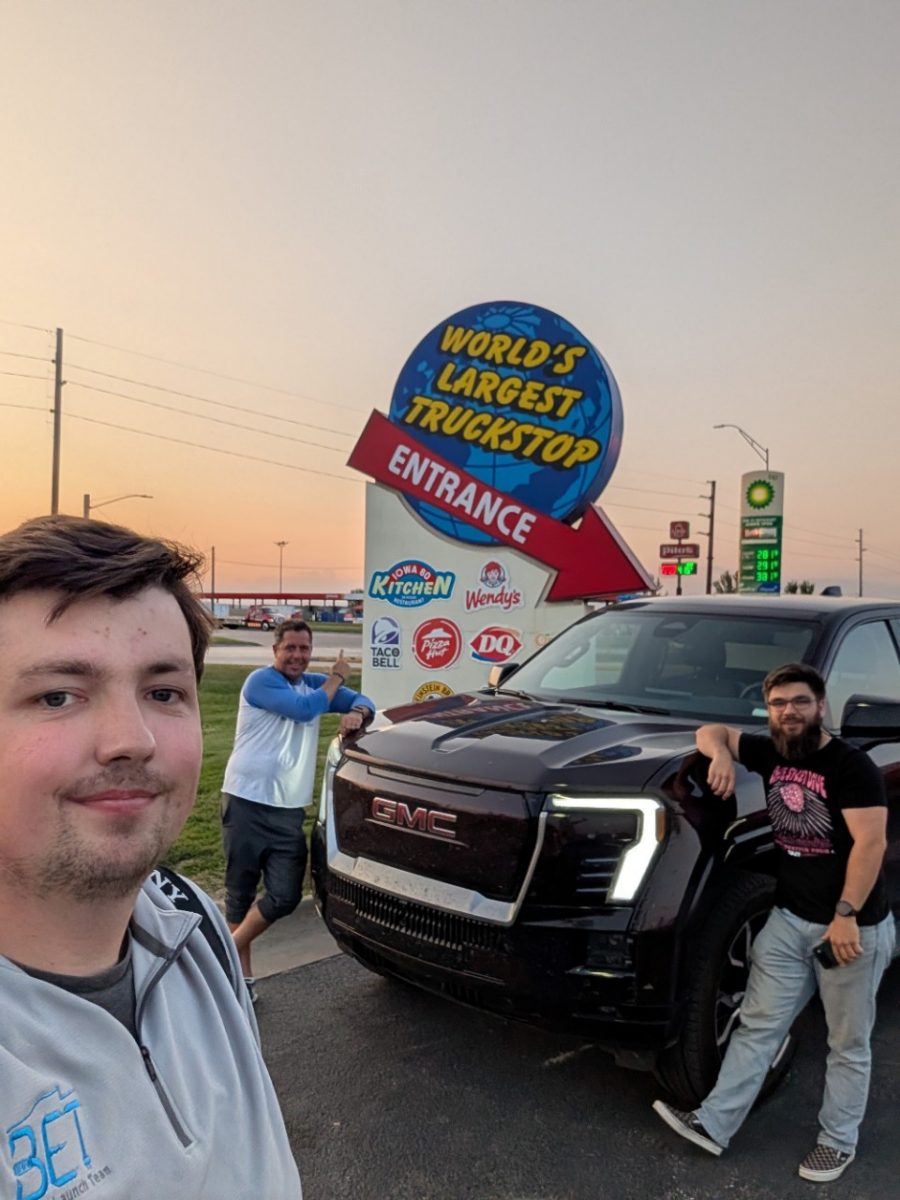By Bob Sorokanich, senior editor, GM News
By Bob Sorokanich, senior editor, GM News
A cross-country road trip is probably the best way to appreciate America’s vastness – its mountains and deserts, its bustling cities and secluded wilderness. But when three General Motors engineers embarked earlier this year on a 5,000-plus-mile drive from Southeast Michigan to San Francisco and back, they weren’t just chasing scenery. They were gathering real-world data on Super Cruise, EV charging, and real-time range prediction while towing a trailer. Along the way, they collected firsthand expertise that can’t be replicated with simulation.
Quality engineering manager Tony Kraatz, along with software engineers Max Schwinghammer and Chris Cline, set out from their homes near GM’s Warren Technical Center in Michigan driving two pre-production GM electric vehicles, a Cadillac OPTIQ luxury crossover and a GMC Sierra EV pickup truck.
Hitched to the GMC was a loaded cargo trailer, providing real-world data on how the truck’s built-in range estimator adapts to towing. Both vehicles were equipped with Super Cruise1, which the team used wherever it was available.
“We were able to get firsthand exposure to a lot of real-world scenarios, from trailering features and GPS navigation updates to Super Cruise behavior in unusual situations,” said Kraatz. “Plus, I got the awesome chance to get to know Max and Chris better. Traveling with people for that long really gives you a better appreciation for what they bring to the team and the company.”
Driving the GMC, Schwinghammer was impressed with a brand-new capability that will soon be available to customers. “The trailering feature that predicts your remaining battery range with and without the trailer really exceeded my expectations,” he said.
Since this was an engineering test, both vehicles were loaded up with advanced monitoring gear that gave the team a real-time inside look at the software powering both vehicles’ advanced features. This setup helped the team find the root cause of a frustrating problem they discovered while using a public fast-charging system at a highway rest stop.
“Chris noticed that the OPTIQ was charging slowly at one of our DC fast charging stops,” Schwinghammer said. The team dug into the software and discovered that the public charger’s software code had a typo causing the lower speed. “We called the charger operator and they said ‘yep, we see the typo, we’ll fix it right away.” It was a powerful moment where the engineers recognized the collaborative, all-together approach the industry needs to navigate a fast-paced transition that extends beyond vehicles themselves. “A customer may have just moved to a new charger and not reported it, but we had all the equipment, helped the cause, and did something we can’t in a simulated test environment,” said Cline.
By the time the 5,000-mile round-trip was complete, the team had logged 2,987 kWh of energy across 32 DC fast charging stops, observing the vehicles’ performance under a wide range of terrains and temperatures. They also gained extensive experience with Super Cruise: In the GMC, Super Cruise was engaged for roughly 4,100 miles out of the 5,000-mile trip, all with a trailer in tow. Most importantly, for Kraatz, the trip was an opportunity to see how members of his own team perform. “The trip really showed how passionate Chris and Max are about the work they do,” he said. “Witnessing how much they know about our software, our subsystems, our components – that was truly awesome.”
1Always pay attention while driving and when using Super Cruise. Do not use a hand-held device. Requires active Super Cruise plan or trial. Terms apply. Visit cadillacsupercruise.com, chevysupercruise.com, https://www.buick.com/explore/technology/super-cruise or https://www.gmc.com/connectivity-technology/super-cruise for compatible roads and full details.

A cross-country road trip is probably the best way to appreciate America’s vastness – its mountains and deserts, its bustling cities and secluded wilderness. But when three General Motors engineers embarked earlier this year on a 5,000-plus-mile drive from Southeast Michigan to San Francisco and back, they weren’t just chasing scenery. They were gathering real-world data on Super Cruise, EV charging, and real-time range prediction while towing a trailer. Along the way, they collected firsthand expertise that can’t be replicated with simulation.
Quality engineering manager Tony Kraatz, along with software engineers Max Schwinghammer and Chris Cline, set out from their homes near GM’s Warren Technical Center in Michigan driving two pre-production GM electric vehicles, a Cadillac OPTIQ luxury crossover and a GMC Sierra EV pickup truck.

Hitched to the GMC was a loaded cargo trailer, providing real-world data on how the truck’s built-in range estimator adapts to towing. Both vehicles were equipped with Super Cruise1, which the team used wherever it was available.
“We were able to get firsthand exposure to a lot of real-world scenarios, from trailering features and GPS navigation updates to Super Cruise behavior in unusual situations,” said Kraatz. “Plus, I got the awesome chance to get to know Max and Chris better. Traveling with people for that long really gives you a better appreciation for what they bring to the team and the company.”
Driving the GMC, Schwinghammer was impressed with a brand-new capability that will soon be available to customers. “The trailering feature that predicts your remaining battery range with and without the trailer really exceeded my expectations,” he said.

Since this was an engineering test, both vehicles were loaded up with advanced monitoring gear that gave the team a real-time inside look at the software powering both vehicles’ advanced features. This setup helped the team find the root cause of a frustrating problem they discovered while using a public fast-charging system at a highway rest stop.
“Chris noticed that the OPTIQ was charging slowly at one of our DC fast charging stops,” Schwinghammer said. The team dug into the software and discovered that the public charger’s software code had a typo causing the lower speed. “We called the charger operator and they said ‘yep, we see the typo, we’ll fix it right away.” It was a powerful moment where the engineers recognized the collaborative, all-together approach the industry needs to navigate a fast-paced transition that extends beyond vehicles themselves. “A customer may have just moved to a new charger and not reported it, but we had all the equipment, helped the cause, and did something we can’t in a simulated test environment,” said Cline.

By the time the 5,000-mile round-trip was complete, the team had logged 2,987 kWh of energy across 32 DC fast charging stops, observing the vehicles’ performance under a wide range of terrains and temperatures. They also gained extensive experience with Super Cruise: In the GMC, Super Cruise was engaged for roughly 4,100 miles out of the 5,000-mile trip, all with a trailer in tow. Most importantly, for Kraatz, the trip was an opportunity to see how members of his own team perform. “The trip really showed how passionate Chris and Max are about the work they do,” he said. “Witnessing how much they know about our software, our subsystems, our components – that was truly awesome.”
1Always pay attention while driving and when using Super Cruise. Do not use a hand-held device. Requires active Super Cruise plan or trial. Terms apply. Visit cadillacsupercruise.com, chevysupercruise.com, https://www.buick.com/explore/technology/super-cruise or https://www.gmc.com/connectivity-technology/super-cruise for compatible roads and full details.